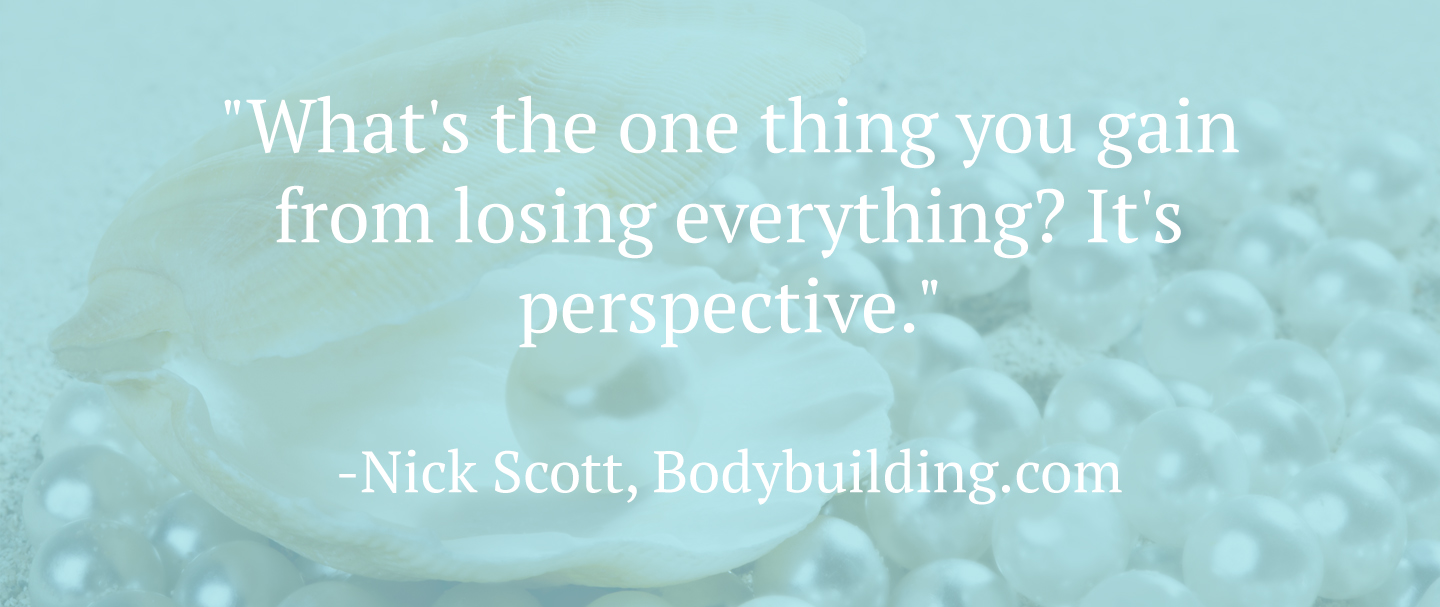“Today’s young men live in a paradigm where failure means generational detriment. Through baseball, we can tangibly demonstrate to them the role that failure plays in development.”
– C.J. Stewart, L.E.A.D.
Most of what Nick Scott remembers about the morning of Aug. 17, 1998, comes to him in slow motion. Hearing Scott describes the circumstances surrounding that morning seems surreal. How else can you explain a routine trip in his Buick Skylark that turned his life every which way but the one he wanted?
A tire blew out. That’s what changed the course of his life. Thrown from the car as it rolled 5 and a half times, Scott plummeted to the ground with a thud. The car’s final roll slammed against his back. And then the lights went out. He tells that story a lot.
When he recalls the event, each and every turn, every second of recall comes to him in slow motion. Researchers say that when a person is in danger, a brain area called the amygdala becomes more active, laying down an extra set of memories that go along with those normally taken care of by other parts of the brain. In essence, frightening events are associated with richer and denser memories – the more memory you have of an event, the longer you believe it took.
Nick Scott is many things today – professional speaker, author, professional bodybuilder, wheelchair ballroom dancer and personal trainer. You might be interested to know that as a Bodybuilding.com athlete, he travels the world over visiting expos like the FIBO Germany, LA Fitness Expo, Arnold Sports Festival and Mr. Olympia. One of his bosses is Arnold Schwarzenegger, who was drawn to Scott’s vivacious attitude and courage.
It wasn’t always that way. Laying in his hospital bed, Scott wasn’t certain he’d ever walk again. Paralyzed from the waist down, he fell into a deep depression. His weight ballooned to more than 300 pounds. A source of constant ridicule by the very friends who were once in awe of his exceptional athletic ability and charm, he wasn’t sure he wanted to go on.
“It took me many years to accept who I am and be OK with who I am,” Scott recalls. “We all have disabilities, but one of mine is visible.”
Scott talks in a commanding voice, interspersing his conversation with a series of gentle and powerful exclamations. The comeback wasn’t easy. He admits that up front. But eventually, his will took charge. “What’s the one thing you gain from losing everything?” he asks. “It’s perspective. Because it wasn’t about if my glass was half empty or half full. I was just grateful that I had a glass.”

And so, it began. Slowly. Methodically. Scott went back to the weight room. Over the course of a year, he warmed up with the weight that others his age performed as a one-rep max. In time, his body weight went from 300 to 190. In 2006, Scott entered his first wheelchair bodybuilding competition. It didn’t matter where he placed, all that mattered was how far he had come.
The powerlifting competitions came in bunches. He went on to get an associate’s degree and bachelor’s degree. And, even though the doctors told him he would never walk again, he did. With the help of braces, Scott is able to stand up and take several steps from his wheelchair.
“Someone’s opinion of you doesn’t have to become your reality because if you start living your life to please others, you become a slave,” Scott says. “The two themes that I always tell people they need to follow are motivation and inspiration. For all of the benefits they offer, motivation and inspiration are neither permanent nor automatic. When something motivates or inspires us, we must seize upon it and let it guide us as we work harder to meet our personal and professional goals.”
Scott says that by capturing these motivational and inspirational moments, you can successfully provide for your family, help your colleagues and support the strategic goals of your company.

Caught looking
He had everything that a baseball craves. The arm. The bat. The speed. The instincts. C.J. Stewart had it all. As a 9th grader, he had his first workout with the Chicago Cubs. He went on to get drafted right out of high school.
It didn’t work out that time. After he walked away, Stewart ended up attending Georgia State University, and then DeKalb Junior College in Atlanta. He failed out of both schools. The Cubs came knocking again, so he officially signed a professional contract. He played for two years before being released.
That’s where Stewart’s baseball story should have ended. Admittedly, there was so much he didn’t understand about the developmental process. The game was just bigger than anything he had imagined as a kid growing up in Atlanta. It required more of him than just picking up his glove and running onto the field. The truth? Stewart failed because he lacked core values, discipline and accountability.
Failure. That’s a word that Stewart uses a lot with the young players he instructs today. The new course his life took began with his desire to give young baseball players the mental and physical tools they needed to achieve their goals – on and off the field.
It started with AT-BATS, a proven, trademarked, comprehensive system of professional training and development designed to improve baseball performance through identifying and improving specific areas in the development process. Its success can be seen in his stable of students, including vaunted Major Leaguers like Chicago Cubs’ Jason Heyward, former Pittsburgh Pirate one-time League MVP and San Francisco Giant Andrew McCutchen and St. Louis Cardinal Dexter Fowler, to name a few.
“I just grew tired of being me,” Stewart says, reflecting on the days following his exit of the game. “Failure is an inherent part of baseball, but it can ultimately lead you to success in the game.”
There is more to C.J. Stewart’s story. In the summer of 2008, he and his wife, Kelli, created L.E.A.D., a 501 (c)3 nonprofit organization designed to help level the playing field for disadvantaged, Black boys in Atlanta. L.E.A.D., which stands for Launch, Expose, Advise and Direct, helps develop ambassadors who help launch student-athletes toward educational opportunities after converting their raw talent into the skills required for entry into college athletic programs.
“Today’s young men live in a paradigm where failure means generational detriment,” Stewart says. “Through baseball, we can tangibly demonstrate to them the role that failure plays in development, using our games as the testing ground for the core values that we’re teaching them.”
The lesson that Scott and Stewart teach us is that we all aspire to greatness and strive to do amazing things in one way or another. To get there sometimes means finding that silver lining in a very dark cloud. It’s about what Scott calls embracing the “why” factor.
“It is the answer to the ‘why?’ when you take a certain path and do things in a certain manner that defines your purpose, outlines your plan and illustrates the end result,” Scott says. “Think of a child learning to ride a bike. They are not concerned with the amount of effort it takes to get on the bike. They will probably fall once or twice. The only thing that concerns the child is the ‘why?’ Why are they on the bike? To conquer the challenge, learn from it and to move forward.”

